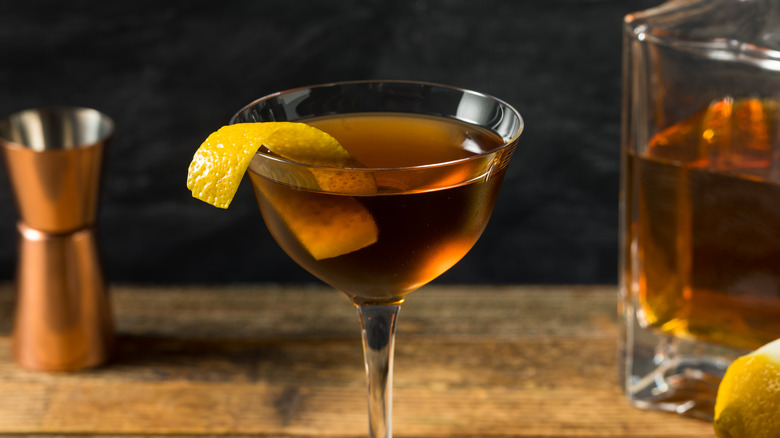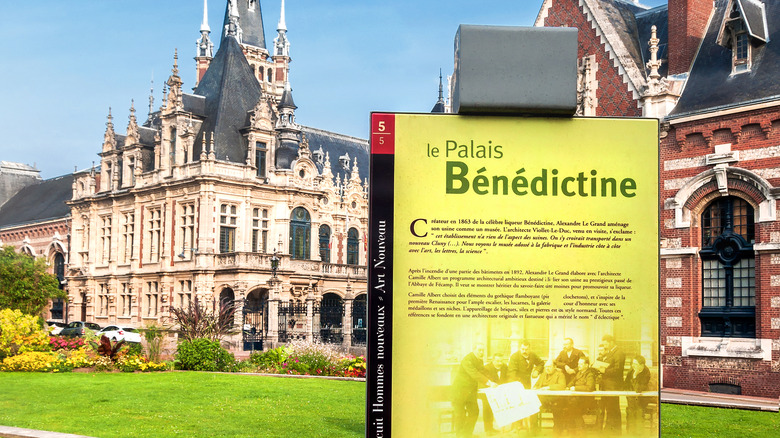The French Origins Of The Bénédictine Cocktail Are A Bit Hazy
Bénédictine is one of those liqueurs of a bygone era, an era before Prohibition when herbal liqueurs were at their prime. Thanks to an increased interest in such pre-Prohibition libations, established liqueurs like this French classic have snuck their way out of obscurity. But what exactly is Bénédictine? It's a combination of things; a base spirit mixed with 27 different herbs and spices thrown in for good measure. Saffron gives the liqueur an amber hue, while citrus, cardamom, and cedar wood linger on the nose. Its taste is a mix of honey, citrus, clove, cardamom, and saffron. It's an elegant liqueur, closer in spirit to a heavily spiced cordial than a mixer.
A bottle of the stuff immediately brings with it the sensation of antiquity. It's an old-fashioned bottle, with a wide base, long neck, and wax seal stamped just above the logo. The logo itself reads: D.O.M 1510 Bénédictine. The D.O.M stands for "Deo Optimo Maximo," meaning "to God, most good, most great." If this sounds monastic, that's because it is. Deo Optimo Maximo is the motto of the Bénédicitne monks.
As the legend goes, the recipe for this liqueur was developed in 1510 by the monks of the Bénédictine monastery in northern France. The monastery was destroyed during the 18th century, but not before the text containing the recipe was handed down to the Le Grand Family for safekeeping. At least, that's what they say.
There's nothing like a good story
Its a story worthy of an Indiana Jones film, one that can be taken verbatim or passed off as a brilliant marketing strategy. Believed to be the invention of a 16th century monk named Dom Bernardo Vincelli, the original Bénédicitne liqueur was said to be produced by the monks of Fécamp Abbey in Normandy. The abbey was destroyed during the French Revolution, and the order disbanded forthwith. However, the monks had the foresight to pass on their texts and recipes to private benefactors, one of which happened to be the Le Grand Family.
In the 19th century, Alexandre Le Grand was apparently skimming over his inheritance when he came across Vincelli's recipe. A wine merchant by trade, Le Grand took the recipe and adapted it to current tastes. The resulting recipe, along with Vincelli's original, are supposedly kept under strict guard at a vault in Geneva, Switzerland. Very few people have laid eyes on these documents, and Le Grands subsequent marketing campaign, plus the fact that he built the current distillery over the remains of the abbey, have led to a fair amount of skepticism about the authenticity of the liqueurs origins.
Whether you take the story as gospel or view it as one of the greatest marketing campaigns of all time, the monastic angle worked to propel Le Grand's Bénédicitne to enormous popularity. You can find it today in cocktails like the Bobby Burns and Vieux Carres.

